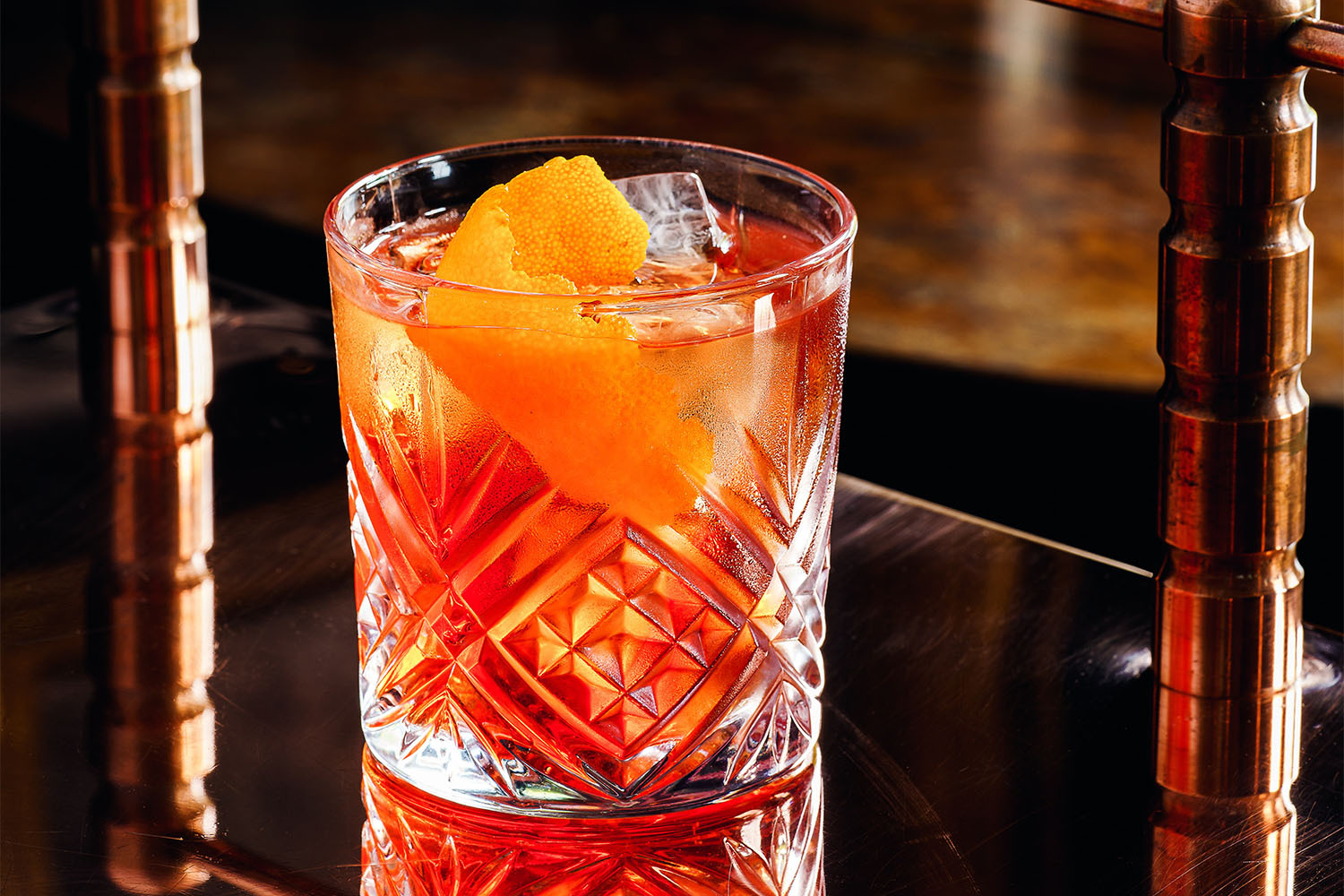
How to Put a Twist on the Classic Negroni
NPH's favorite bartending hack? Remixing the go-to cocktail.
The Negroni is one of my favorite drinks, partially because it requires just three ingredients — Campari, Sweet Vermouth and Gin — all in equal parts. (It’s also delicious as a spirit-free version.) It’s engagingly spirituous, perfectly balanced and so simple that I can make one while talking directly into a camera for a contractually obligated video about Wondercade that you have (possibly, hopefully) seen taking the interweb by storm.
And like most great cocktails, it comes with a fun origin story.
According to legend, the first Negroni was mixed a century ago, when Count Camillo Negroni asked a Florentine bartender to stiffen his Americano by replacing the soda water with gin. As the drink caught on, the bartender began replacing the traditional lemon slice with orange to signal to imbibers that they’d been presented with a new, stronger cocktail. A gustatory caution flag, if you will.
The Negroni, then, is a fungible drink by definition: the standard recipe was the result of some mad-scientist, turn-of-the-century Italian bartender tinkering around with the ingredients, and in that same ahem spirit, other barmaids and men have taken similar creative license with the cocktail in the decades since.
No one knows this better than Matthew Hranek, drinker of drinks, haver of opinions and the writer behind Negroni: A Love Affair With a Classic Cocktail.
“It comes down to understanding the formula and then riffing to your taste, by understanding what happens when those elements all come together,” says Hranek. “First, start adjusting to your palate. I lean into a more gin-forward, more Campari-forward element and tone back the vermouth.”
At the same time, he says vermouth is the “flavor game-changer” that allows for the wildest adventures in Negroni mixing.
“My wife likes the vanilla notes of Cocchi, and I like the rich, spicy undertones of the Punt e Mes. But when I can find a funky, small, thoughtfully produced vermouth — like in Italy or Spain — that’s a good, worthwhile experiment.”
As for the substitution that home bartenders should avoid at all costs?
“I would say I put my foot down when certain people say it’s OK to use vodka. Gin, mezcal and bourbon all have flavor components that contribute to the beauty of this drink. Adding a flat, tasteless spirit just to boost the alcohol doesn’t make sense to me.”
To begin your journey into the heart of Negroni remixing, you really just need to memorize the formula: one part spirit (that’s the gin), one part amaro or aperitif (Campari) and one part fortified wine (Sweet Vermouth). As long as you pluck three bottles that belong to those three categories, there’s a good chance the result will be at the very least digestible, and quite possibly downright delicious, even superior to Count Camillo’s trusty original.
Below, I’ve offered up three simple swap-outs that I can vouch for personally …
- The Mezcal Negroni: Keeping the 1:1:1 ratio the same, substitute the floral gin for the stronger mezcal to give your Negroni a smoky, South-of-the-Border kick.
- The Porto Negroni: Same ratio as above, but substitute the Vermouth for an aged tawny Port to lend it an oakier, heavier, more fall-friendly essence. Or perhaps I should say autumn-friendly — we don’t want you stumbling.
- The Negroni Blanc: Equal portions, yet again. But substitute the Campari for French apéritif Suze and the Sweet Vermouth for Lillet Blanc to give your Negroni a more citric, botanical profile, as well as a distinctive, lighter hue.
Cheers.
Recommended
Suggested for you



